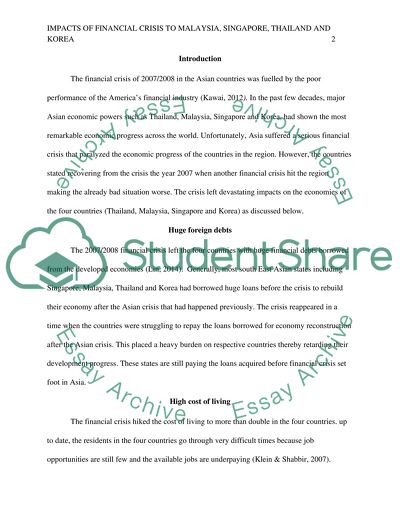Impact of the recent financial crisis to Malaysia, Singapore, Thailand Essay. Retrieved from https://studentshare.org/finance-accounting/1655338-impact-of-the-recent-financial-crisis-to-malaysia-singapore-thailand-and-korea
Impact of the Recent Financial Crisis to Malaysia, Singapore, Thailand Essay. https://studentshare.org/finance-accounting/1655338-impact-of-the-recent-financial-crisis-to-malaysia-singapore-thailand-and-korea.


